Classifications Of Periodontal Disease
Classifications of periodontal disease. Necrotizing periodontitis periodontitis as a manifestation of systemic disease and a single category of periodontitis with staging and grading criteria as presented in Table 2. This classification too heavily weighted the patient age at disease onset eg early onset periodontitis EOP and adult periodontitis AP as well as the course of the disease eg rapidly-progressing EOPRPP. 1 New technology research and information has emerged in the past 18 years which led to the new revisions.
5 linhas Staging looks at classifying the extent of and severity of periodontal disease in a patient. This course discusses the outcomes of that meeting and examines the concepts of staging grading and distribution to classify a patients periodontal health periodontal disease or peri-implant disease. The old classification AAP 1989 described five disease classes.
Pale pink stippled knife edge margin and tightly adapted. If there has been no progression in five years the diagnosis is Grade A periodontitis. 16 It is recognized that there are rare systemic disorders such as Papillon Lefèvre Syndrome that generally result in the early presentation of severe periodontitis.
As a review the periodontal classifications were revised in 1999 and classified as chronic aggressive localized and generalized necrotizing and a manifestation of systemic disease. If progression is less than 2mm the diagnosis is Grade B periodontitis. Periodontitis is a complex disease of the tooth supporting structures resulting in inflammation in supporting tooth structures resulting in progressive attachment loss and bone loss that has no geographic ethnic or age barriers.
However there is one exception to this rule. The new classification of periodontal disease that you your patient and your insurance company can understand Periodontal disease and conditions can be broken down into three major categories. Classification of periodontal diseases 2.
More teeth due to periodontal disease development of Class II or III furcation involvement development of vertical defects etc. Subsequently a simpler classification was agreed upon at the 1st European Workshop in Periodontology. Periodontal disease was classified into broad groups.
The classification of periodontal diseases has come a long way over the past hundred years. When the patients periodontal records are available the rate of periodontitis progression over the previous five years should be calculated.
Periodontitis is a disease-causing the progressive destruction of the tooth-supporting apparatus characterized by a clinical attachment loss CAL a radiographically assessed alveolar bone loss the presence of periodontal pockets and gingival bleeding.
For instance if the case was classified as Stage III due to the presence of. Periodontal disease was classified into broad groups. As a review the periodontal classifications were revised in 1999 and classified as chronic aggressive localized and generalized necrotizing and a manifestation of systemic disease. The two major categories are Gingivitis and Periodontitis. The old classification AAP 1989 described five disease classes. The last time scientists and clinicians in the field of periodontology and related areas agreed upon a classification system for periodontal diseases was in 1989 at the World Workshop in Clinical Periodontics. Periodontitis is a complex disease of the tooth supporting structures resulting in inflammation in supporting tooth structures resulting in progressive attachment loss and bone loss that has no geographic ethnic or age barriers. The new classification of periodontal disease that you your patient and your insurance company can understand Periodontal disease and conditions can be broken down into three major categories. The American Academy of Periodontology classification system was established to identify distinct types of periodontal diseases by taking into consideration factors such as age of onset clinical appearance rate of disease progression pathogenic microbial flora and systemic influences.
1 New technology research and information has emerged in the past 18 years which led to the new revisions. Periodontitis was classified into simplex and complex. Periodontitis is a complex disease of the tooth supporting structures resulting in inflammation in supporting tooth structures resulting in progressive attachment loss and bone loss that has no geographic ethnic or age barriers. Pale pink stippled knife edge margin and tightly adapted. However there is one exception to this rule. Peri-implant diseases and conditions can be broken down into four major categories. This classification too heavily weighted the patient age at disease onset eg early onset periodontitis EOP and adult periodontitis AP as well as the course of the disease eg rapidly-progressing EOPRPP.




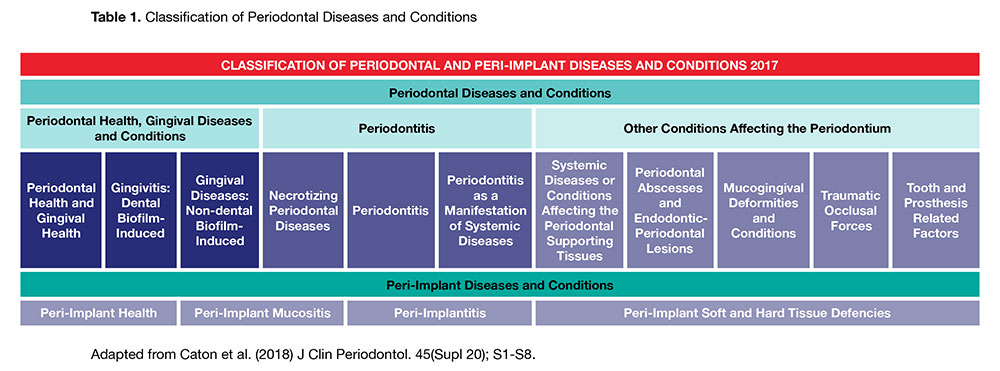


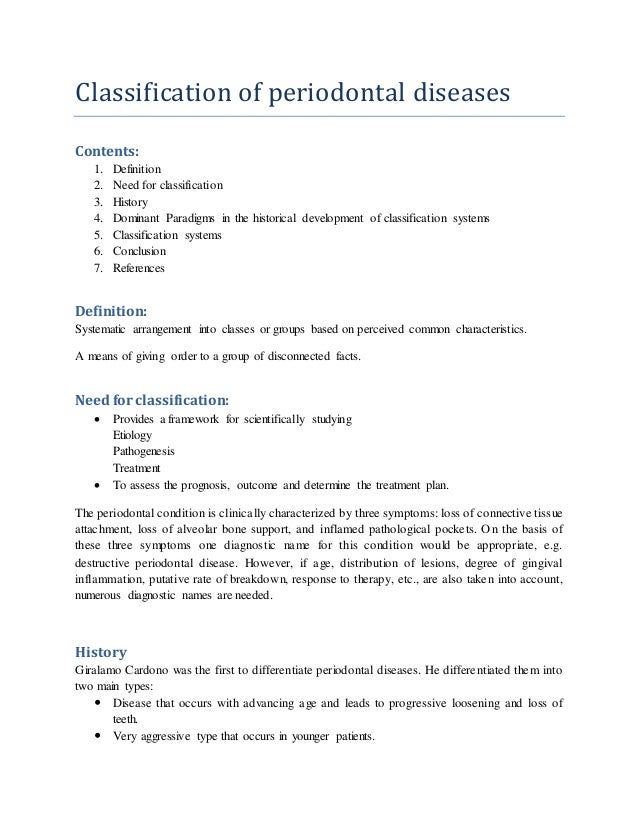


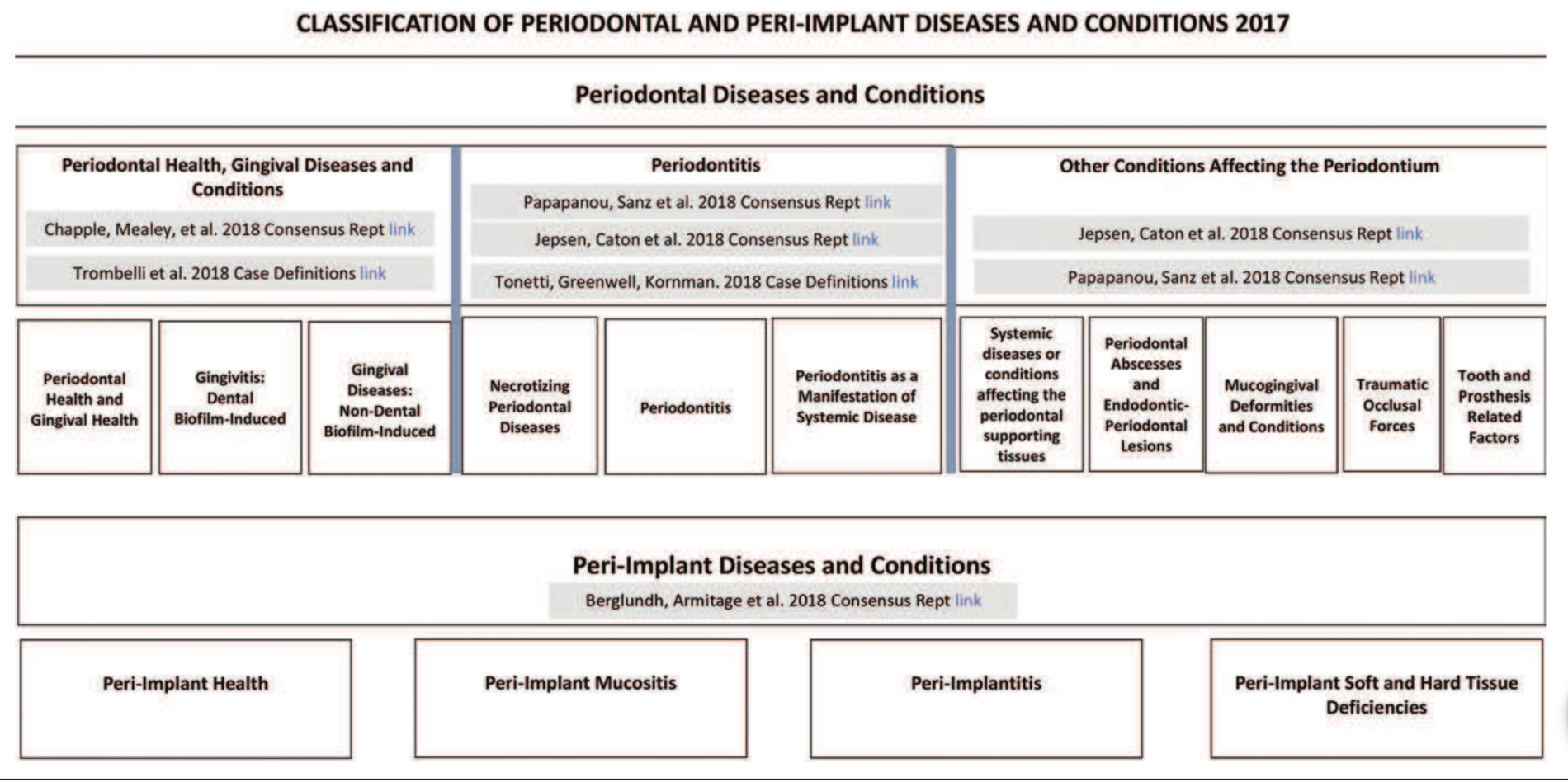

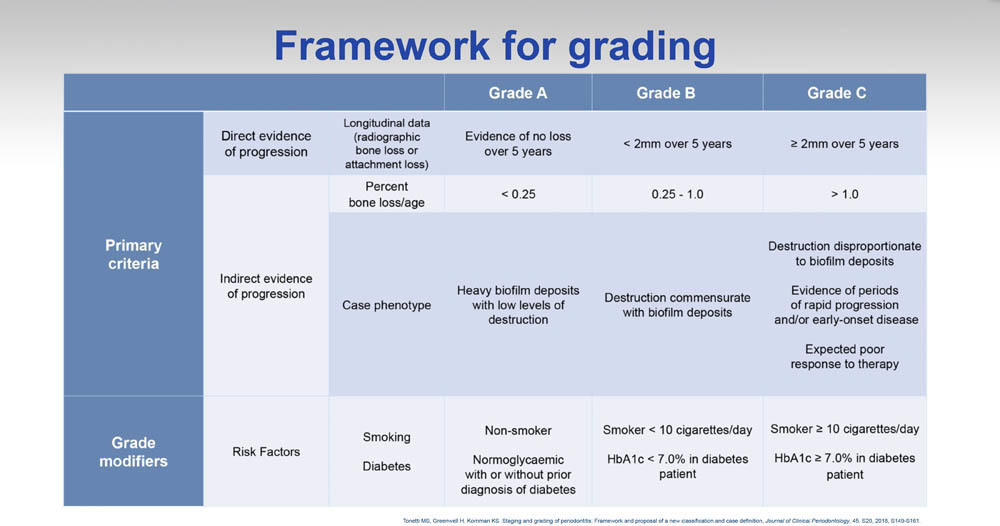
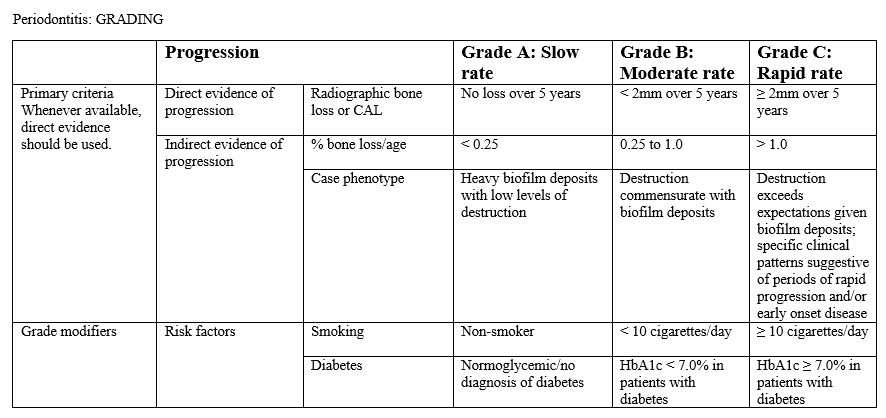


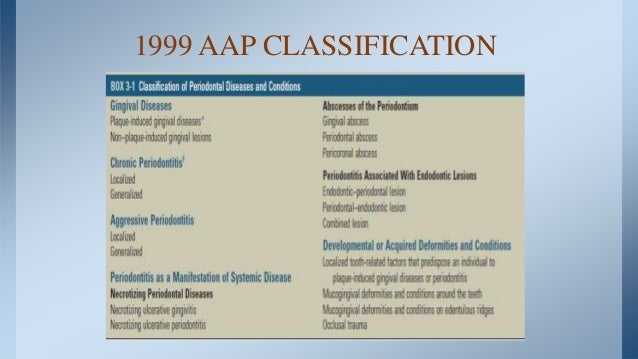



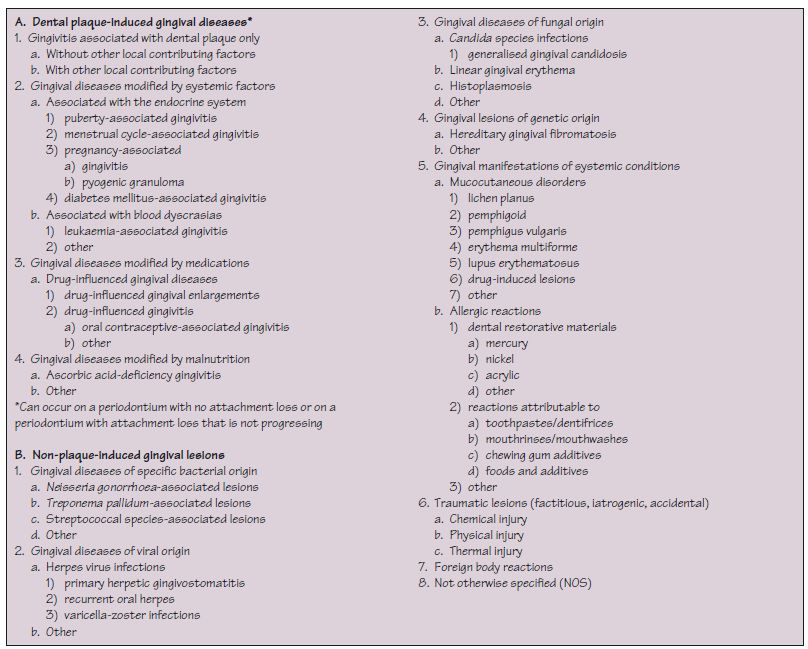
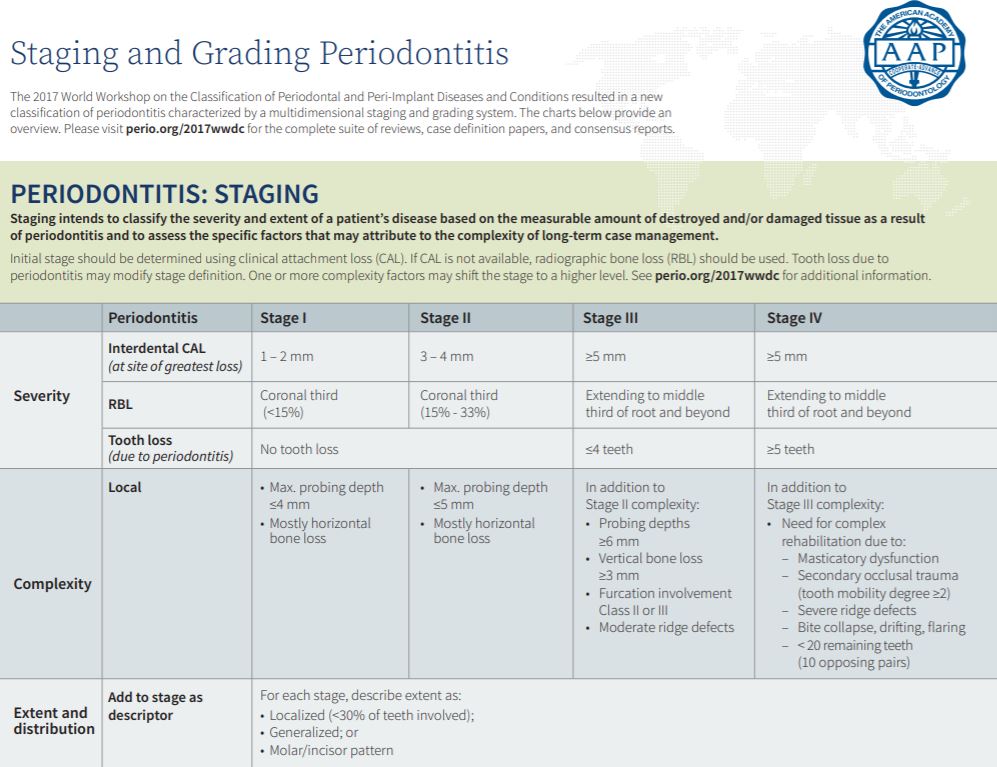


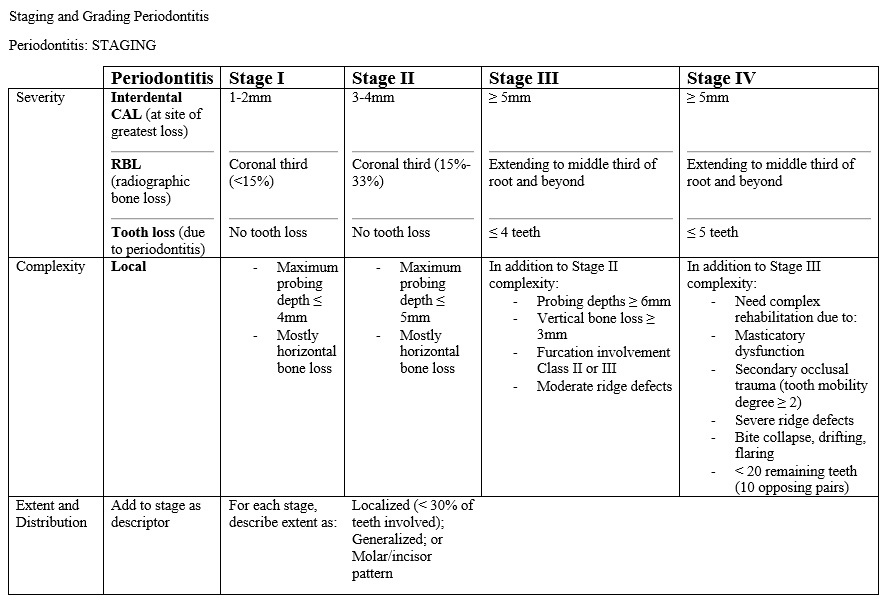


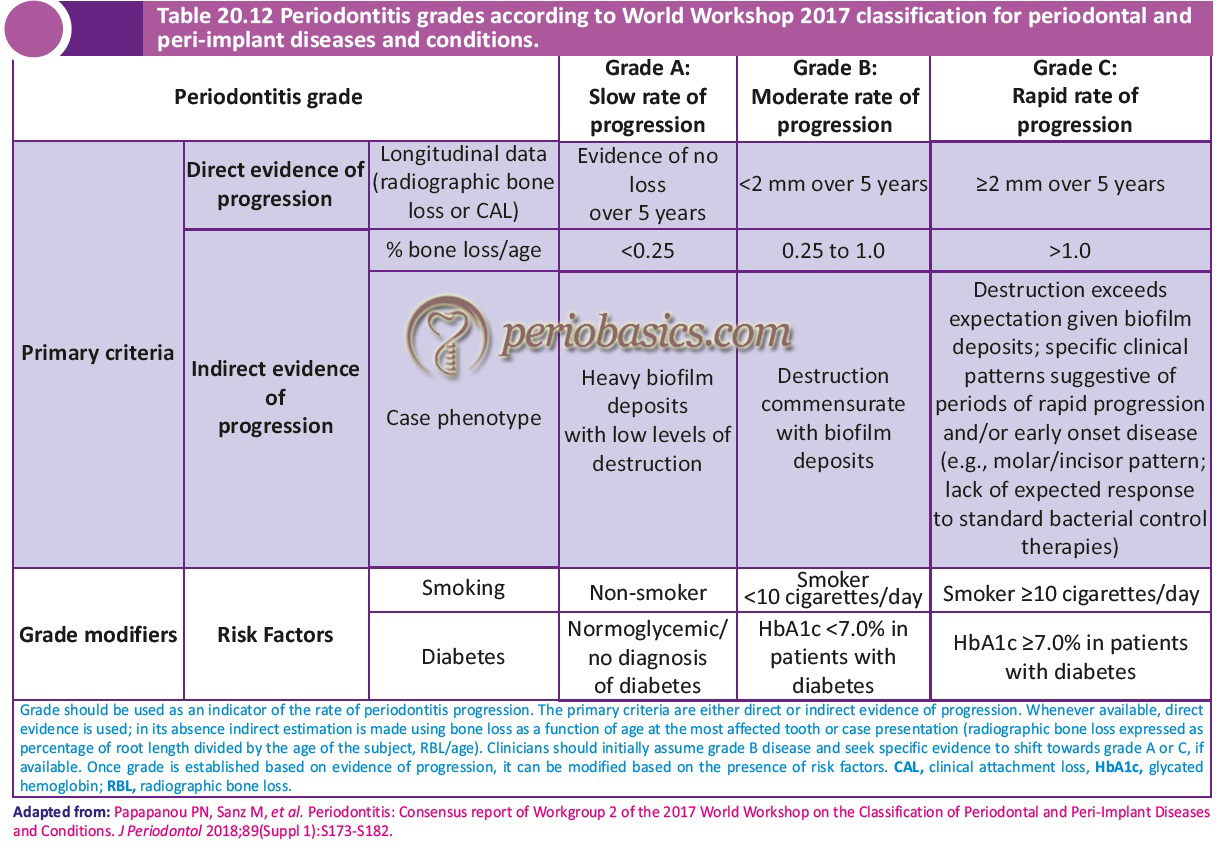

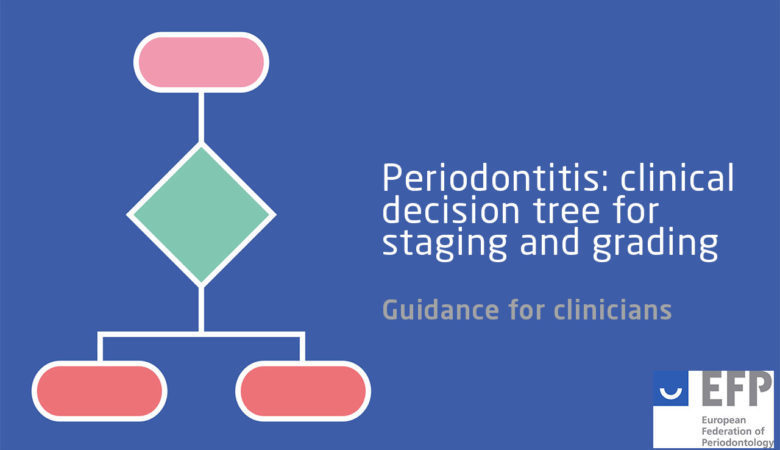
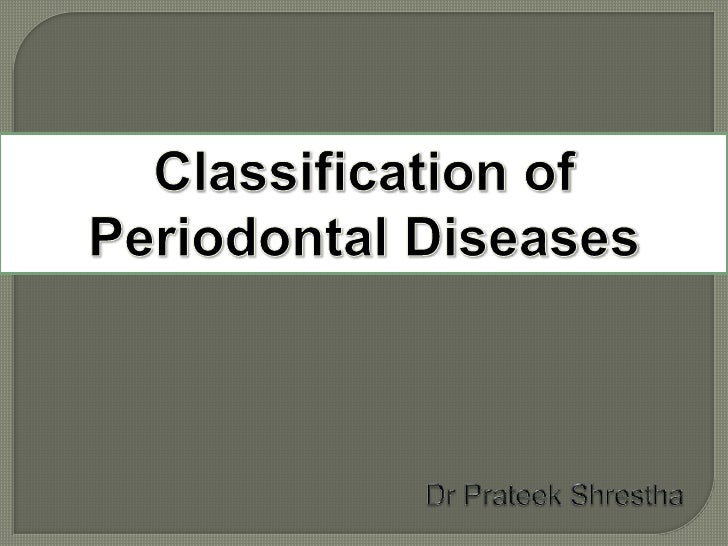
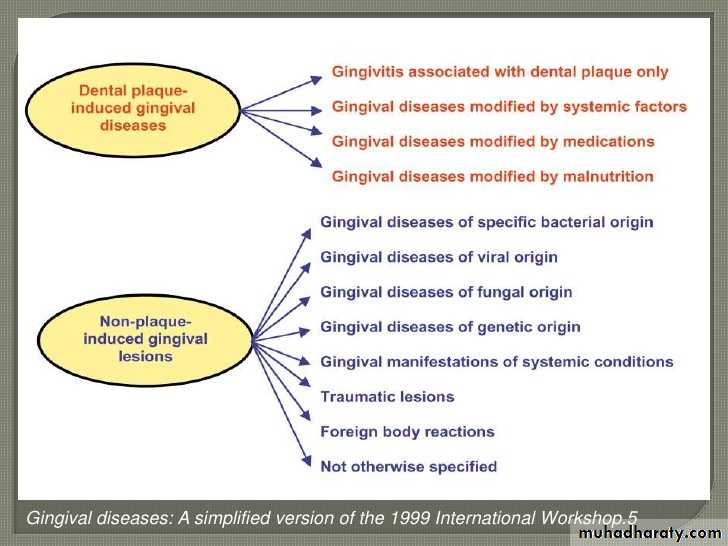
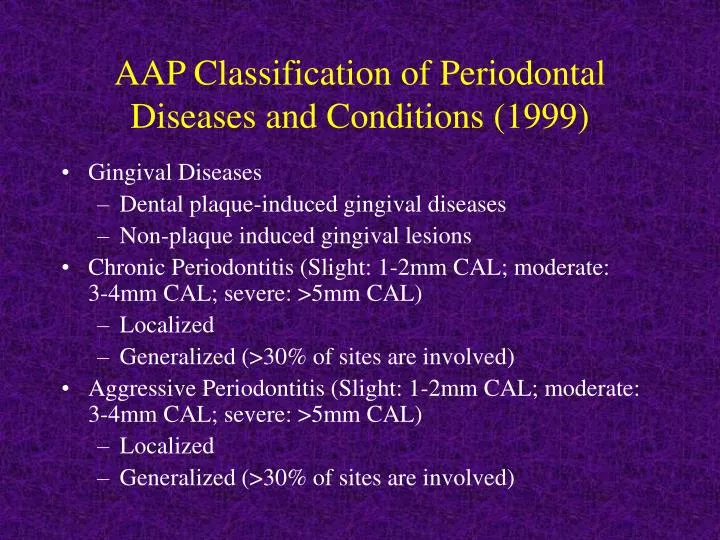






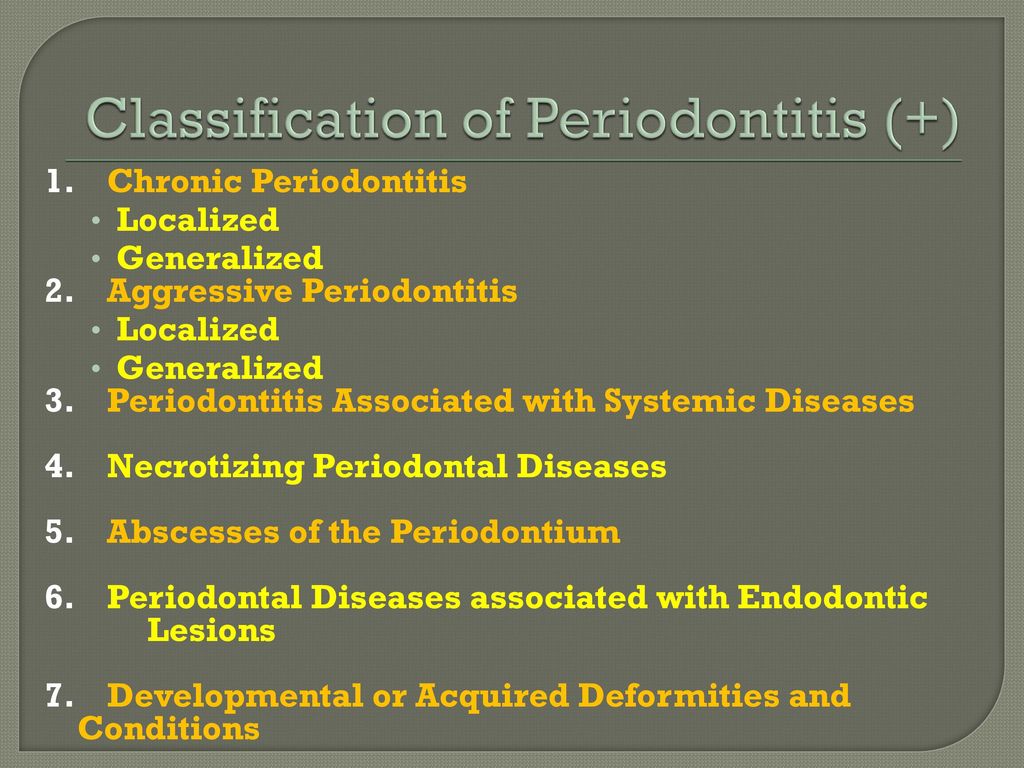



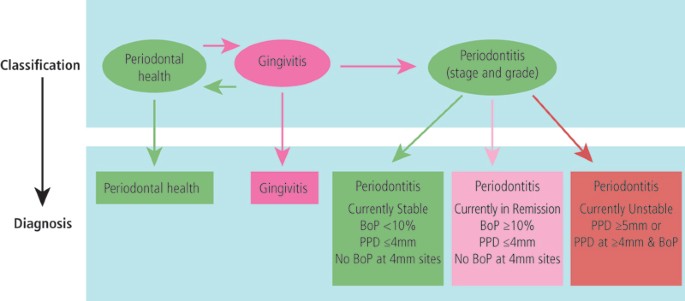

Post a Comment for "Classifications Of Periodontal Disease"